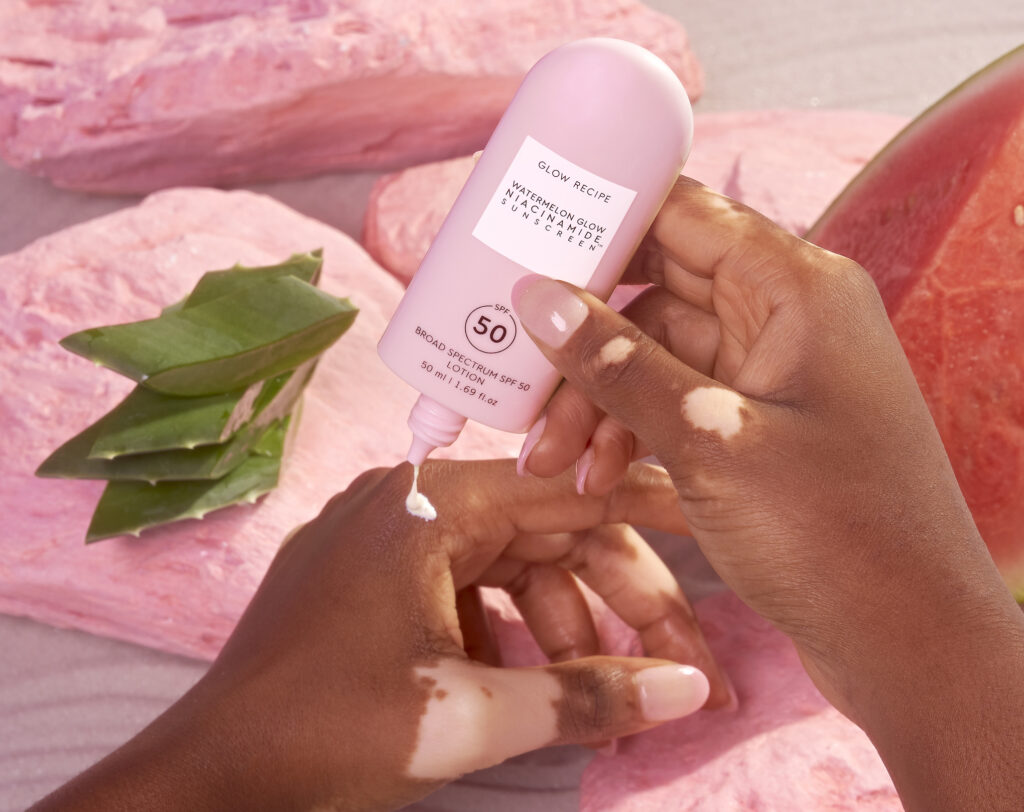
Cars can drive themselves, you’re able to get a meatless burger delivered with the press of a button, and fine-art collectors are investing in JPEGs — yet with so many wild advancements, we’re left wondering why one of skincare’s most crucial daily staples has historically fallen short in innovation. There’s no question that sunscreen deserves a place front and center on your shelf for cancer prevention purposes and also as an aid for multiple skin issues caused by the sun. But finding one that you totally trust isn’t always easy.
From their often tricky texture and confusion surrounding the SPF number and testing to figuring out what type of protection to choose, there can be a learning curve and tons of trial and error involved. Here, we take a look at some common issues people have when selecting a sunscreen — and see how we’ve taken matters into our own hands.

Let’s talk texture
While weightless moisturizers and super-charged serums sink into skin immediately upon application, it is harder to find sunscreens that do so. When you think about sunscreens of times past, they were usually a gloppy white concoction that sat on top of skin without absorbing easily. Even now, many mineral sunscreens take way too long to rub in — not to mention they often leave telltale streaks.
And when you finally do blend in the product as evenly as possible, there’s the issue of what’s left behind: residue that ranges from greasy, to shiny, to sticky. Another sunscreen stress? According to Sara Rehart, a director of regulatory affairs based in New York City, because of the levels of certain ingredients, like titanium dioxide and zinc oxide that block UV rays in some mineral sunscreens, the formulas can be chalky and leave a white cast, especially noticeable on darker skin tones.
Consider the actives
Another piece of the sunscreen puzzle has to do with the different kinds available: chemical and physical. “Chemical sunscreens will absorb sun rays and convert them to heat,” explains Rehart. “Physical sunscreen, made up of minerals, will act as a physical barrier that blocks and deflects sun rays from hitting the skin.” Both types can protect skin from UVA and UVB rays, so it comes down to personal choice. And once you’ve settled on one, it’s also necessary to consider the SPF number.
So, what exactly does that number mean? “SPF stands for Sun Protection Factor. Simply put, an SPF 30 product will take your skin 30 times longer to burn than if you weren’t wearing any sunscreen at all. The Skin Cancer Foundation and most dermatologists will recommend a water-resistant, broad-spectrum sunscreen with an SPF of at least 30,” explains Rehart.
Take testing into account
Although many brands have started to make strides with their formulas, from the look to the feel, over the past few years the category has been laden with controversy. “Any product that’s claiming sun protection will need validated testing that proves it is indeed providing protection from the sun,” says Rehart. “There are standardized test methods that are accepted domestically and globally for sun protection, SPF and broad-spectrum, which is protection from both UVA and UVB.” Because they need to meet FDA drug guidelines and theoretical sunscreen values — while also meeting brand criteria — there can be challenges in the formulation process.
Even when brands promise they’ve adhered to stringent protocols, social media has been quick to call out certain SPFs on the market today. So much so that people have taken research into their own hands and even poked holes in SPF claims and real-life results. The takeaway? When launching a new product now, people expect multiple types of testing and transparency of ingredient levels, especially the ones doing the protection.

Meet your new go-to
We wanted to guarantee that our first-ever product dedicated to sun protection goes above and beyond, which is why we’re thrilled to welcome Watermelon Glow Niacinamide Sunscreen SPF 50 to our Watermelon family. With this glow-boosting, super-lightweight SPF, you don’t have to choose between chemical or mineral protection — ours offers the best of both worlds, with SPF 50 and a formula that blends in sheer in seconds. FYI: It also underwent two rounds of testing, one by the FDA that’s accepted in the US and Canada, and another by ISO, which is accepted in the EU. They determined that it offers SPF 59 and 51, respectively, which is how we landed on SPF 50.
Not only that, but the formula features watermelon extract, niacinamide (a.k.a. vitamin B3), hyaluronic acid, and aloe for visibly brighter, more even skin that’s hydrated and soothed. This unique everyday essential underwent two different tests, features non-nano zinc oxide, as well as three different chemical filters, and works across all skin tones and types — even sensitive.
In short, our new sunscreen goes the extra mile: rigorous testing, dual protection, and skincare benefits you can feel good about. It’s time for a new addition to the category that (finally!) doesn’t call for you to compromise.
Read more about what goes into a good SPF:











